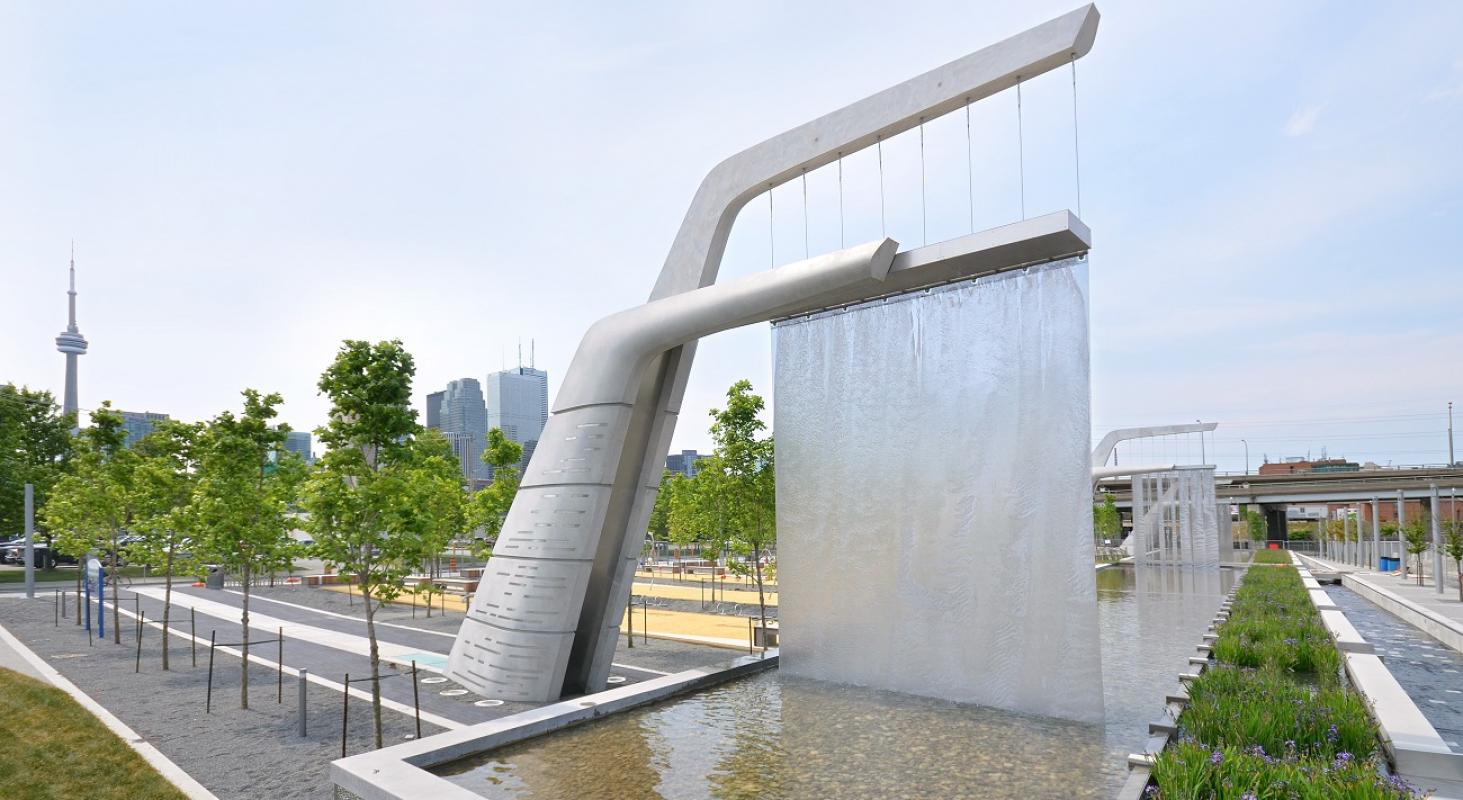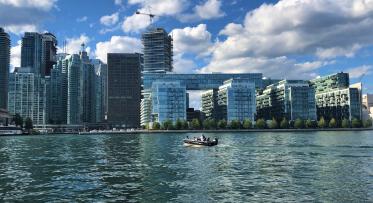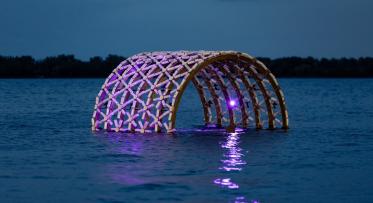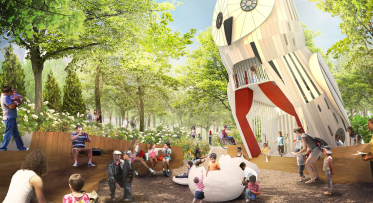Art and innovation form unique waterfront park
July 25, 2011, Toronto, ON— Waterfront Toronto and its government partners officially opened the completed Sherbourne Common, a unique park that seamlessly blends art and innovation.
Located in the heart of the new East Bayfront neighbourhood, Sherbourne Common is far more than the area’s main park. It is the first park in Canada to incorporate a neighbourhood-wide stormwater treatment facility. Public art is integrated with the water infrastructure to create a public space that is as beautiful as it is functional.
The park, which lies on both sides of Queens Quay Boulevard east of Lower Sherbourne Street, was completed in two phases. The portion south of Queens Quay was completed and opened in September 2010, and the portion on the north side was completed in July 2011.
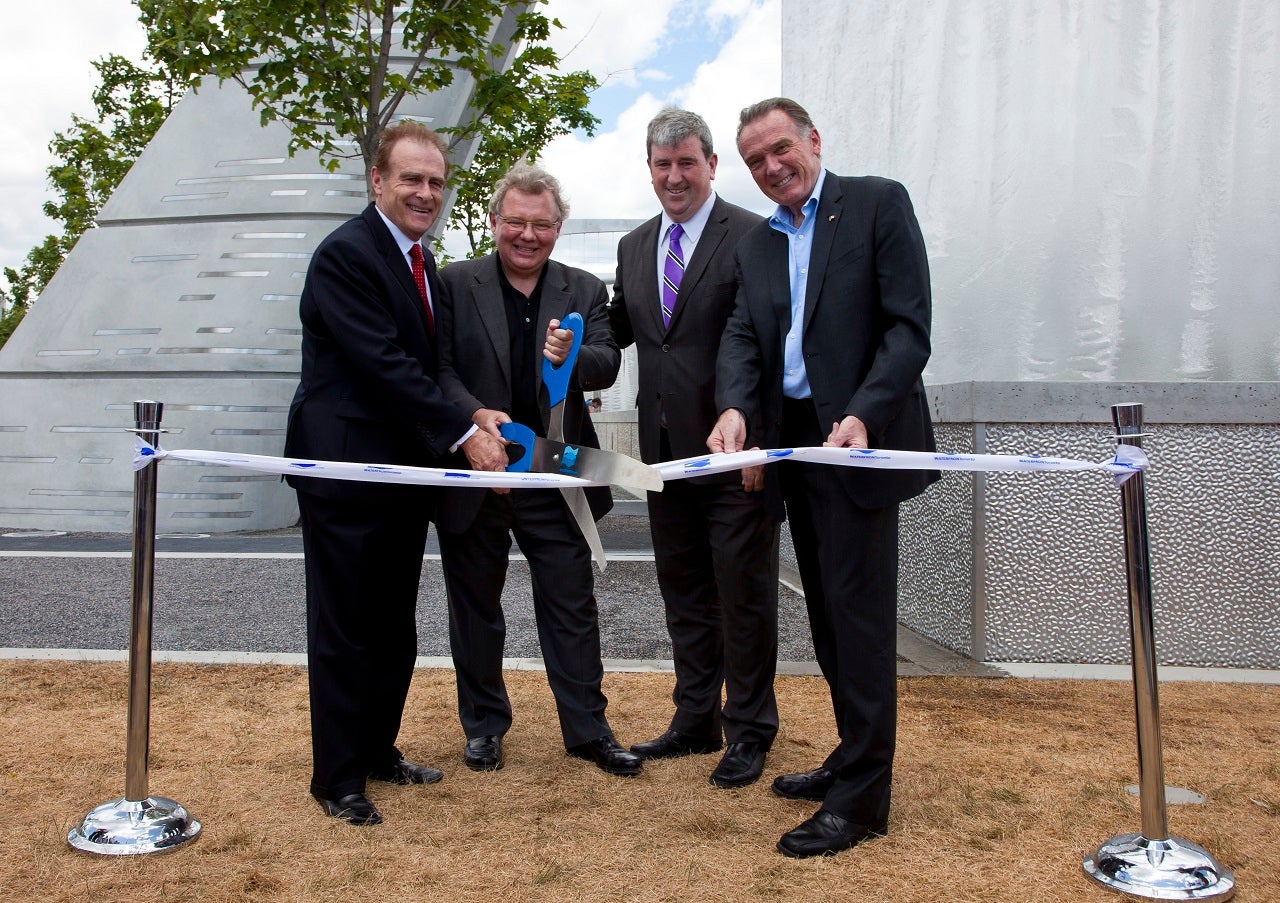
From left to right: Councillor Norm Kelly, Chair of Parks & Environment for the City of Toronto; Mark Wilson, Chair of Waterfront Toronto; Hon. Glen Murray, Ontario Minister of Research and Innovation; Peter Kent, MP (Thornhill) and Canada’s Environment Minister.
A water treatment facility, housed in the basement of the park’s pavilion on the southern side, cleans collected storm and lake water with ultraviolet light. The treated water is then sent underground to the north side of the park where it is released through three dramatic nine-metre-high art sculpture towers. The water flows from the tops of the towers, down metal mesh veils and into a 240-metre long water channel, or urban river, where it then flows out to Lake Ontario.
“Our government is pleased to have invested in the renewal of Toronto’s waterfront by providing more than $27 million in helping transform this part of Toronto’s industrial past into a beautiful public space,” said Minister Flaherty, MP (Whitby–Oshawa) and Canada’s Finance Minister. “Investing in infrastructure strengthens and binds this country and builds a healthier environment for all Canadians.”
“To have Sherbourne Common completed is a tremendous accomplishment,” said Minister Kent, MP (Thornhill) and Canada’s Environment Minister. “The Sherbourne Common development is an integral part of the incredible transformation already underway across Toronto’s Waterfront. It will form the anchor for a thriving community of families, schools and businesses.”
“Sherbourne Common is going to be a wonderful asset for our community,” said Glen Murray, MPP (Toronto Centre) and Ontario Minister of Research and Innovation. “Our government is proud to support this project, which will give residents another way to enjoy the waterfront, bring neighbours and families together and make our community move lively and more livable for decades to come."
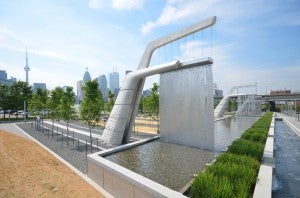
"Sherbourne Common is a great example of how a park can be more than just a fantastic public space, with the addition of public infrastructure and public art," said Councillor Norm Kelly, Chair of Parks & Environment for the City of Toronto. "This park will be a great asset to the developing East Bayfront community and all the people of Toronto," Kelly added.
“Sherbourne Common is a catalyst for the development of the East Bayfront neighbourhood,” said Waterfront Toronto Board Chair Mark Wilson. “The park has already helped us attract private and public sector partners who are working with us to transform this former industrial area into a dynamic new community.”
George Brown College is currently constructing a new waterfront campus on the western edge of the park south of Queens Quay that will open fall 2012. Great Gulf will be building its mixed-use development on the eastern flank of the north portion of the park. Sales of units will launch later this year with occupancy expected by 2015. The $800 million Bayside development by Hines will be constructed on the east side of Sherbourne Common south of Queens Quay. The project will feature 1,700 residential units, plus retail, cultural and commercial spaces in multiple buildings. Units will go on sale in 2012 and the first occupancy is expected by 2015.
Sherbourne Common was designed by Vancouver-based landscape architectural firm Phillips Farevaag Smallenberg in association with The Planning Partnership. The art sculpture towers, entitled “Light Showers”, were designed by Jill Anholt. Chosen through an online public naming contest, the name ‘Sherbourne Common’ reflects the idea that parks and public spaces should belong to the people.
The spectacular waterfront park is designed to be both a city-wide destination and neighbourhood amenity for daylong and year-round use. Along with the art features, the newly completed north portion features a children’s playground, a grove of trees, plus seating and benches. The water towers are lit at night and as people move over the bridge of the water channel, motion sensors trigger shifting light patterns in the water falling from the sculptures. The mesh veils of art sculptures are designed to capture water in the winter to form unique ice patterns.
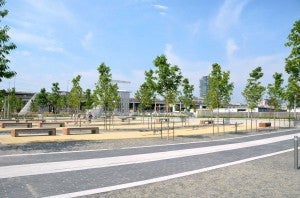
The south portion of the park features a large greenspace overlooking the lake that can be used for festivals and special events, a splash pad that becomes a skating rink in the winter months, and a weather-protected pavilion with washrooms and space for a future café.
The total budget for Sherbourne Common was $28.7 million plus an additional $1.9 million for the public art. The federal government provided $27 million, the provincial government provided $1 million and the City of Toronto contributed $2.6 million. The cost for the art feature will be recovered through development fees as part of the Waterfront Toronto public art strategy.
Waterfront Toronto has made major strides in revitalizing Toronto’s waterfront. In addition to building and improving 17 parks and public spaces, Waterfront Toronto has finalized development agreements with Great Gulf Group of Companies, Urban Capital and Hines for private sector projects on the waterfront, as well as with George Brown College for the development of their new state-of-the-art Health Sciences campus.
The Governments of Canada and Ontario and the City of Toronto created Waterfront Toronto to oversee and lead the renewal of Toronto’s waterfront. Public accessibility, design excellence, sustainable development, economic development and fiscal sustainability are the key drivers of waterfront revitalization.
-30-
Media Contacts:
Bruce Sudds, Waterfront Toronto

